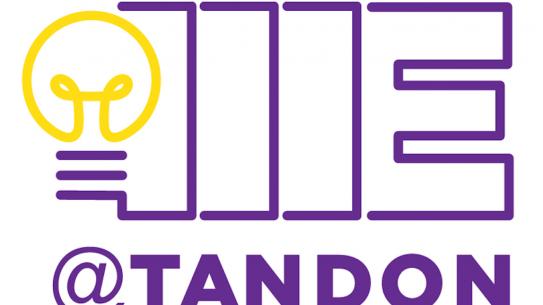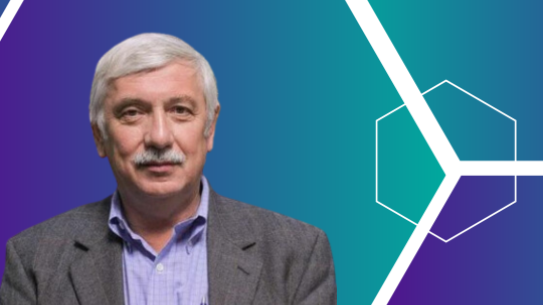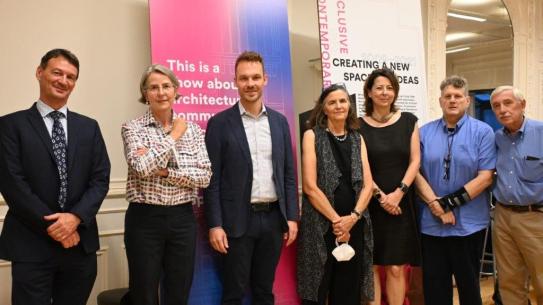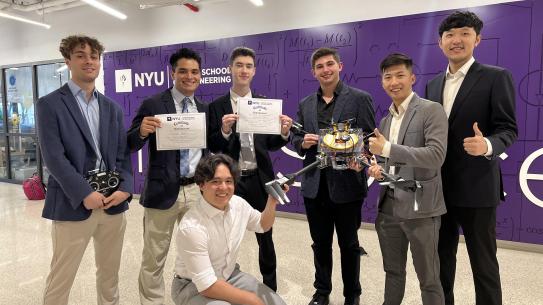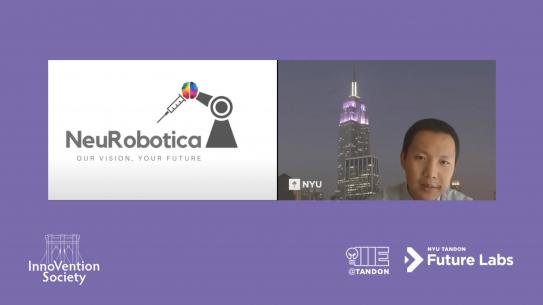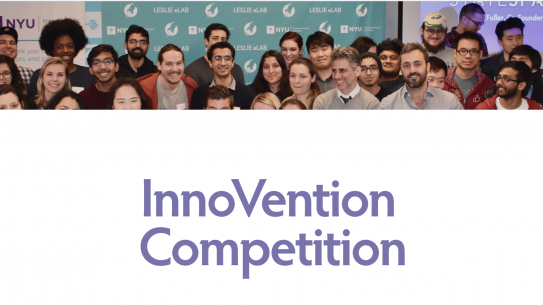Kurt Becker
-
Professor Emeritus
-
Advisor to the CUSP Director
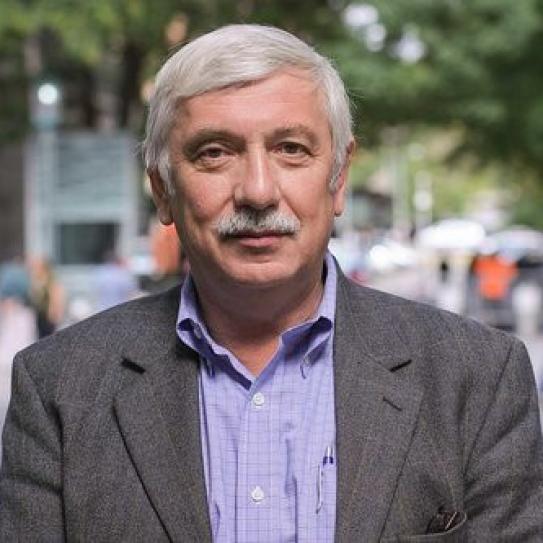
Kurt Becker is an international expert in the areas of the experimental and theoretical study of electron-driven processes in plasmas. He was part of a group of pioneering scientists who determined the ionization cross sections for atoms and molecules, which are critical to understanding the charge carrier formation in plasmas.
He is also well known for microplasmas or plasmas generated and sustained at atmospheric pressure. These plasmas are very unstable and prone to destructive arching. By confining these plasmas to less than 1mm, they become more stable. The plasmas provide a fertile environment for basic plasma physics and for developing new plasma technologies.
Additional areas of interest include atomic, molecular and chemical physics, the development of new experimental techniques and processes, technology transfer, and IP commercialization.
Becker joined the Polytechnic Institute of NYU faculty in his current capacity in 2007. Prior to joining NYU-Poly, he was associate director of the Center for Environmental Systems at Stevens Institute of Technology from 2003-2007 and department head from 2000 to 2007.
He earned a Diplom in Physik (MS) and Dr. rer. Nat. Universitat des Saarlandes in 1978 and 1981, respectively.
He is the recipient of the Dr. Eduard-Martin Prize for Excellence in Research, American Physical Society Fellow, Thomas Alva Edison Patent Award (with Erich Kunhardt), and an honorary professorship from the Leopold Franzens Universitat.
A prolific author, Becker has written over 200 articles in refereed journals and books, 375 conference presentations and abstracts and seven patents on the stabilization of atmospheric pressure plasmas and their applications. In addition, he has served on the editorial boards of numerous journals and was the invited presenter at national and international conferences.
Education
Leopold-Franzens Universitaet, Innsbruck, Austria
Honorary Professor
Universitaet des Saarlandes, Saarbruecken, Germany
Dr. rer. nat. (PhD), Physics
Universitaet des Saarlandes, Saarbruecken, Germany
Diplom in Physik (MS), Physics
Publications
Journal Articles
- P. Kurunczi, N. Abramzon, M. Figus, and K. Becker, “Measurement of Rotational Temperatures in High-Pressure MHC and CPE Discharge Plasmas”, Acta Physica Slovaca 54, 115-124 (2004)
- G. Hanel, B. Gstir, S. Denil, T. Fiegele, M. Rümmele, M. Stano, L. Feketeova, S. Matejcik, P. Scheier, K. Becker and T.D. Märk, “High-Resolution Multiple Electron Impact Ionization of He, Ne, Ar, Kr, and Xe Atoms Close to Threshold: Appearance Energies and Wannier Exponents”, Nuclear Instrum. Methods B 205, 413-6, (2003)
- H. Deutsch, P. Scheier, K. Becker, and T.D. Märk, “Revised High-Energy Behavior of the DM Formula for the Calculation of Electron Impact Ionization Cross Sections of Atoms”, Int. J. Mass Spectrom. 233, 13-7 (2004)
- S.H. Yin, C. Christodoulatos, A. Koutsospyros, and K. Becker, “Destruction of Environmental Air Contaminants Using a Non-Thermal, Ambient-Pressure Plasma”, Invited Papers of the International Conference on Environmental Systems (ICES), (2003), on CD-Rom
- H. Deutsch, P. Scheier, K. Becker and T.D. Märk, “Calculated Cross Sections for the Electron-Impact Detachment from Negative Ions Using the DM Formalism”, Chem. Phys. Lett. 382, 26-31 (2003)
- R. Basner, M. Schmidt, and K. Becker, “Measurement of Absolute Partial and Total Electron Ionization Cross Sections of Tungsten Hexafluoride”, Int. J. Mass Spectrom. 233, 25-31 (2004)
- H. Qiu, K. Martus, W.L. Lee, and K. Becker, “Hydrogen Generation in a Microhollow Cathode Discharge in High-Pressure Ammonia-Argon Mixtures”, Int. J. Mass Spectrom. 233, 19-24 (2004)
- W.Huo, V. Tarnovsky, and K. Becker, “Electron Impact Ionization Cross Sections of SF5 and SF3”, Int. J. Mass Spectrom. 233, 111-6 (2004)
- A. Koutsospyros, S.-M. Yin, C. Christodoulatos, and K. Becker, “Destruction of Hydrocarbons in Non-Thermal, Ambient-Pressure Capillary Discharge Plasmas”, Int. J. Mass Spectrom. 233, 305-15 (2004)
- P. Scheier, H. Deutsch, K. Becker and T.D. Märk, “Calculation of Electron Impact Cross Sections for the Fragmentation and Dissociative Ionization of Fullerenes Using a Semi-Empirical Method”, Int. J. Mass Spectrom. 233, 293-8 (2004)
- S. Feil, K. Gluch, S. Matt-Leubner, P. Scheier, J. Limtrakul, M. Probst. H. Deutsch, A. Stamatovic, K. Becker, and T.D. Märk, “Absolute Partial and Total Cross Sections for Positive and Negative Ion Formation Following Electron Impact on Uracil“, J. Phys. B 37, 3013-20 (2004)
- N. Masoud, K.E. Martus, and K. Becker, “VUV Emissions from a Cylindrical Dielectric Barrier Discharge in Ne and He-H2 Mixtures”, Int. J. Mass Spectrom. 233, 395-403 (2004)
- S. Feil, K. Gluch, P. Scheier, K. Becker, and T.D. Märk, “The Anomalous Shape of the Cross Section for the Formation of SF3+ Fragment Ions Produced by Electron Impact on SF6 Revisited”, J. Chem. Phys. 120, 11456-8 (2004)
- H. Deutsch, K. Becker, A.N. Grum-Grzhimailo, K. Bartschat, H. Summers, M. Probst, S. Matt-Leubner, and T.D. Märk, “Calculated Cross Sections for the Electron Impact Ionization of Excited Ar Atoms Using the DM Formalism, Int. J. Mass Spectrom. 233, 39-43 (2004)
- R. Basner and K. Becker, ”Experimental Electron Impact Ionization Cross Sections of Cl2”, New J. Phys. 6, 118-127 (2004)
- N. Masoud, K. Martus, M. Figus, and K. Becker, “Rotational and Vibrational Temperature Measurements in a High-Pressure Cylindrical Dielectric Barrier Discharge”, Contr. Plasma Phys. 45, 30-37 (2005)
- B.C. Garret, D.A. Dixon, D.M. Camaioni, D.M. Chipman, M.A. Johnson, C.D. Jonah, G.A. Kimmel, J.H. Miller, T.N. Rescigno, P.J. Rossky, S.S. Xantheas, S.D. Colson, A.H. Laufer, D. Ray, P.F. Barbara, D.M. Bartels, K.H. Becker, K.H. Bowen, S.E. Bradford, I. Carmichael, J.V. Coe, L.E. Corrales, J.P. Cowin, M. Dupuis, K.B. Eisenthal, J.A. Franz, M.S. Gutowski, K.D. Jordan, B.D. Kay, J.A. LaVerne, S.V. Lymar, T.E. Madey, C.W. McCurdy, D. Meisel, S. Mukamel, A.R. Nilsson, T.M. Orlando, N.G. Petrik, S.M. Pimblott, J.R. Rustard, G.K. Schenter, S.J. Singer, A. Tokmakoff, L.-W. Wang, C. Wittig, and T.S. Zwier, “The Role of Water on Electron-Initiated Processes and Radical Chemistry: Issues and Scientific Advances, Chem. Reviews 105, 355-89 (2005)
- A. Koutsospyros, S.M. Yin, C. Christodoulatos, and K. Becker, “Plasmachemical Degradation of VOCs in a Capillary Discharge Plasma Reactor”, IEEE Trans. Plasma Sci 33, 42-9 (2005)
- J. Lopez, W. Zhu, A. Freilich, A. Belkind, and K. Becker, “Optical Emissions from a Pulsed DC Magnetron Sputtering Plasma”, IEEE. Trans. Plasma Sci. 33, 348-9 (2005)
- S. Matt-Leubner, S. Feil, K. Gluch, J. Fedor, A. Stamatovic, O. Echt, P. Scheier, K. Becker, and T.D. Märk, “Energetics, Kinetics, and Dynamics of Decaying Metastable Ions Studied with a High Resolution Three-Sector-Field Mass Spectrometer”, Plasma Sources Sci. Techn. 14, 26-30 (2005)
- N. Masoud, K. Martus, and K. Becker, “VUV Emissions from a Cylindrical DBD in Ar and Ar/N2 and Ar/air Mixtures”, J. Phys. D 38, 1674-83 (2005)
- J. Lopez, W. Zhu, A. Freilich, A. Belkind, and K. Becker, “Time-Resolved Optical Emission Spectroscopy of Pulsed DC Magnetron Sputtering Plasmas”, J. Phys. D 38, 1769-80 (2005)
- A. Belkind, A. Freilich, J. Lopez, Z. Zhao, W. Zhu, and K. Becker, “Characterization of Pulsed DC Magnetron Sputtering Plasmas”, New Journal of Physics 7, 90-106 (2005)
- H. Deutsch, P. Scheier, S. Matt-Leubner, K. Becker, and T.D. Märk, “A Detailed Comparison of Calculated and Measured Electron-Impact Ionization Cross Sections of Atoms Using the Deutsch-Märk (DM) Formalism”, Int. J. Mass Spectrom. 243, 215-21 (2005)
- H. Deutsch, K. Becker, A.N. Grum-Grzhimailo, M. Probst, S. Matt-Leubner, and T.D. Märk, “Calculated Electron Impact Ionization Cross Sections of Excited Ne Atoms Using the DM Formalism”, Contr. Plasma Phys. 7, 494-499 (2005)
- K. Becker, N. Masoud, K. Martus, and K.H. Schoenbach, “Electron-Driven Processes in High-Pressure Plasmas”, Europ. Phys. J. D 35, 279-97 (2005), – Invited Topical Review
- R. Basner, M. Gutkin, J. Mahoney, V. Tarnovsky, H. Deutsch, and K. Becker, “Electron Impact Ionization of Silicon Tetrachloride”, J. Chem. Phys. 123, 05313 (2005)
- K. Becker, A. Koutsospyros, S.-M. Yin, C. Christodoulatos, N. Abramzon, J.C. Joaquin, and G. Brelles-Mariño, “Environmental and Biological Applications of Microplasmas”, Plasma Phys. Controlled Fusion 47, B513-523, (2005)
- H. Deutsch, K.B. MacAdam, K.Becker, H. Zhang, and T.D. Märk, “Calculated Cross Sections for the Electron Impact Ionization of Na(ns) and Na(nd) Rydberg Atoms”, J. Phys. B 39, 343-353 (2005)
- H. Deutsch, P. Scheier, S. Matt-Leubner, K. Becker, and T.D. Märk, ”Erratum to ”A Detailed Comparison of Calculated and Measured Electron-Impact Ionization Cross Sections of Atoms Using the DM formalism’, IJMS 243 (2005) 215-221”, Int. J. Mass Spectrom. 246, 113 (2005)
- K. Becker, J.G. Eden, and K.H. Schoenbach”Microplasmas and Applications“, J. Phys D 39, R55-70 (2006) – Invited Topical Review
- R. Foest, M. Schmidt, and K. Becker, “Microplasmas, a New World of Low-Temperature Plasmas”, Int. J. Mass Spectrom. 248, 87-102 (2005) – Invited Topical Review
- H. Deutsch, K. Becker, P. Defrance, M. Probst, J. Limtrakul, and T.D. Märk, “Newly Calculated Absolute Cross Sections for the Electron Impact Ionization of C2H2+”, Europ. Phys. J. D 38, 489-493 (2006)
- K. Martus. N. Masoud, and K. Becker, “Collisional and Radiative Processes in High-Pressure Neon/N2 Mixtures”, Plasma Sources Sci. Technol. 15, S84-90 (2006)
- A. Belkind, W. Zhu, J. Lopez, and K. Becker, “Time-Resolved Optical Emission Spectroscopy During Pulsed DC Magnetron Sputter Deposition of Ti and TiO2 Thin Films”, Plasma Sources Sci. Technol. 15, S17-25 (2006)
- S. Denifl, B. Sonnweber, J. Mack, L.T. Scott, P. Scheier, K. Becker, and T.D. Märk, “Appearance Energies of Singly, Doubly, and Triply Charged Coronene and Corannulene Ions Produced by Electron Impact”, Int. J. Mass Spectrom. 249/250, 353-358 (2006)
- K. Becker, J. Mahoney, M. Gutkin, V. Tarnovsky, and R. Basner, “Electron Impact Ionization of SiClx and TiClx (x=1-4): Contributions from Indirect Ionization Channels”, Jap. J. Appl. Phys. 45, 8818-8891 (2006)
- W. Zhu, G. Buyle, J. Lopez, S. Shanmugamurthy, A. Belkind, K. Becker, and R. De Gryse, “Plasma Emission Redistribution in a single Cycle of a Pulsed DC Magnetron”, New J. Phys. 8, 146-162 (2006)
- J. Lecointre, D.S. Belic, J. Jureta, K. Becker, H. Deutsch, J. Limtrakul, T.D. Märk, M. Probst and P. Defrance, “Absolute cross sections and kinetic energy release for doubly and triply charged fragments produced by electron impact on CO+”, J. Phys. B 39, 85-100 (2006)
- S. Gershman, O. Mozgina, A. Belkind, K. Becker, and E. Kunhardt, “Pulsed Electrical Discharges in Bubbled Water”, Contr. Plasma Phys. 1/2, 19-25 (2007)
- J. Lecointre, S. Cherkani-Hassani, D.S. Belic, J.J. Jureta, K. Becker, H. Deutsch, T.D. Märk, M. Probst, R.K. Janev, and P. Defrance, “Absolute Cross Sections and Kinetic Energy Release distributions for Electron Impact Ionization of CD+”, J. Phys. B 40, 2201-2221 (2007)
- K.H. Becker and C.C. Lin, “Elementary Collisions in Plasmas”, in “Low-Temperature Plasma Physics: Fundamental Aspects and Applications”, 2nd edition, editors: R. Hippler, H. Kersten, M. Schmidt, and K.H. Schoenbach, Wiley-VCH Verlag, Berlin (2007), p. 47-70
- K.H. Becker and K.H. Schoenbach, “Microplasmas: Basic Science and Applications”, in “Low-Temperature Plasma Physics: Fundamental Aspects and Applications”, 2nd edition, editors: R. Hippler, H. Kersten, M. Schmidt, and K.H. Schoenbach, Wiley-VCH Verlag, Berlin (2007), p. 463-493
- K.D. Weltmann, M. Schmidt, and K. Becker, “Markets for Plasma Technology”, in “Low-Temperature Plasma Physics: Fundamental Aspects and Applications”, 2nd edition, editors: R. Hippler, H. Kersten, M. Schmidt, and K.H. Schoenbach, Wiley-VCH Verlag, Berlin (2007), p. 865-879
- C. Paduraru, K. Becker, A. Belkind, J. Lopez, Y.A. Gonzalvo, “Characterization of the Remote Plasma Generated in a Pulsed DC Gas-Flow Hollow-Cathode Discharge”, IEEE Trans. Plasma Sci. 35, 527-533 (2007)
- A. Pipa, M. Schmidt, and K. Becker “UV Emissions from a Unipolar Sub-Microsecond Pulsed Dielectric Barrier Discharge in He-Air Mixtures”, Proc. 5th EU-Japan Joint Symposium on Plasma Processing, J. Phys. Conf. Ser. 86, 012014 (2007)
- K. Becker and V. Tarnovsky, “Electron Impact Ionization of Molecules and Free Radicals”, in “Atomic and Plasma-Material Interaction Data for Fusion (APID), Vol. 14 24-33 (2008)
- Deutsch, K. Becker, and T.D. Märk, “Calculated Absolute Cross Sections for the Electron-Impact Ionization of Atoms with Atomic Numbers between 20 and 56 Using the DM Formalism”, Int. J. Mass Spectrom. 271, 58-62 (2008)
- H. Deutsch, K. Becker, H. Zhang, M. Probst, and T.D. Märk, “Calculated Absolute Cross Sections for the Electron-Impact Ionization of the Lanthanide Atoms Using the DM Formalism”, Int. J. Mass Spectrom. 271, 63-67 (2008)
- J. Mahoney, V. Tarnovsky, and K. Becker, “Electron Impact Ionization of SiCl2 and SiCl”, Europ. Phys. J. D. 46, 298-293 (2008)
- J. Mahoney, V. Tarnovsky, and K. Becker, “Electron Impact Ionization of SiCl3 using a Modified Fast-Beam Apparatus”, J. Conf. Proc. “XV. Int. Symposium on Electron-Molecule Collisions and Swarms”, J. Phys. Conf. Ser. 115, 012010 (2008)
- H. Deutsch, K. Becker, M. Probst, W. Zhu, and T.D. Märk, “Calculated Absolute Cross Sections for the Electron-Induced Detachment of the B2-, O2-, BO-, and CN- Anions Using the DM Formalism”, Int. J. Mass Spectrom. 277, 151-154 (2008)
- K.H. Schoenbach and K. Becker, “Microcavity Plasmas: Physics and Applications”, 51st Techn. Conf. Proc., Society of Vacuum Coaters (2008), p.61-68
- M. Gutkin, J.M. Mahoney, V. Tarnovsky, H. Deutsch, and K. Becker, “Electron Impact Ionization of the SiCl3 Radical”, Int. J. Mass Spectrom. 280, 101-106 (2009)
- K. Becker, “Environmental Applications of Non-Thermal Plasmas”, in “Biological and Environmental Applications of Plasmas”, editor: G. Brelles-Mariño, Nova Science Publishing (2009), in press
- K. Becker, “The Use of Non-Thermal Plasmas in Environmental Applications”, in ”Introduction to Complex Plasmas”, editors: M. Bonitz, N. Horing, and J. Meichsner, Springer Verlag, Heidelberg (2009), in press
- H. Deutsch, K. Becker, M. Probst, and T.D. Märk, “The Semi-empirical DM Formalism: A Versatile Approach for the Calculation of Electron-impact Ionization Cross Sections of Atoms, Molecules, Ions, and Clusters”, in “Adv. in Atomic, Molecular, and Optical Physics”, editors: E. Arimondo, P. Berman, C. Lin, Vol. 57, 87-155 (2009)
- O. Mozgina, A. Koutsospyros, S. Gershman, A. Belkind, C. Christodoulatos, and K. Becker, “Decomposition of Energetic Compounds by Pulsed Electrical Discharges in Gas-Bubbled Aqueous Solutions”, IEEE Trans. Plasma Sci. 37, 905-910 (2009)
- G. Vezzù, J.L. Lopez, A. Freilich, and K.H. Becker, “Optimization of Large-Scale Ozone Generators”, IEEE Trans. Plasma Sci. 37, 890-896 (2009)
- K. Becker, “Pulsed Electrical Discharges in Liquids”, in “Plasma Chemistry”, editors: H.E. Wagner, J. Meichsner, and M. Schmidt, Taylor and Francis Publ. (2009), in press
- F. Liu, P. Sun, N. Bai, Y. Tian, H. Zhou, S. Wei, Y. Zhou, J. Zhang, W. Zhu, K. Becker, and J. Fang, “Inactivation of Bacteria in an Aqueous Environment by a Direct-Current, Cold Atmospheric-Pressure Air Plasma Microjet”, Plasma Processes and Polymers (2009), in press
- L.P. Babich, K. Becker, and T.V. Loĭko, “Luminescence from Minerals Exited by Sub-Nanosecond Pulses of Runaway Electrons Generated in an Atmospheric-Pressure High-Voltage Discharge in Air”, IEEE Trans. Plasma Sci. (2009), in press
- P. Sun, J. Pan, Y. Tian, N. Bai, H. Wu, L. Wang, C. Yu, F. Liu, S. Wei, Y. Zhou, J. Zhang, W. Zhu, K. Becker, and J. Fang, “Tooth-Whitening with Hydrogen Peroxide Assisted by a Direct Current, Cold, Atmospheric-Pressure Air Plasma Microjet”, IEEE Trans. Plasma Sci. (2009), submitted
Authored/Edited Books
- Guest Editor, Special Issue of the Zeitschrift fiir Physik D on "Collision Processes Relevant to Low-Temperature Plasmas", 1992;
- Guest Editor, Special Issue of Contributions to Plasma Physics on "Elementary Processes and Basic Data Relevant to Low-Temperature Plasmas", 1995;
- Guest Editor (with W. Carr and E.E. Kunhardt) "Phenomena in Ionized Gases", AIP Press, 1996;
- Editor, "Novel Aspects of Electron-Molecule Scattering", World Scientific Publ., 1998;
- Editor (with M. Inokuti), "Fundamentals of Plasma Chemistry", Vol 43. in "Advances in Atomic, Molecular and Optical Physics", Klüwer Publ., 2000;
- Editor (with U. Kogelschatz, K.H. Schoenbach, and R.J. Barker), "Non-Equilibrium Air Plasmas at Atmospheric Pressure", IOP Publishing, 2005
- Guest Editor, Special Issue of the International Journal of Mass Spectrometry in Honor of Yong-Ki Kim, 2007/08
- Guest Editor, Special Issue of the IEEE Transactions on Plasmas Science on "Atmospheric- Pressure Plasmas: Science and Applications", 2009
Other Publications
Editorial Boards:
- Editorial Board of "Contributions to Plasma Physics, 1996-2004
- Editorial Board of "European Physical Journal D", since 2006
- Editor-in-Chief, European Physical Journal D, since 2009
Affiliations
General/Collaborative Research
Collaborative Research with:
- Universitaet Innsbruck, Austria
- INP Greifswald, Germany
- St. Peter's College, Jersey City NJ
- Stevens Institute of Technology, Hoboken, NJ
Affiliations
Fellow, American Physical Society Member, IEEE Member, German Physical Society Member, Materials Research Society
Awards
1982, Dr. Eduard-Martin Prize for Excellence in Research from the Vereinigung der Freunde der Universität des Saarlandes, Germany 1982-83, Postdoctoral Fellowship from the Deutsche Forschungsgemeinschaft (DFG), Germany 1992, Election to Fellowship in the American Physical Society 2001, Thomas Alva Edison Patent Award (with E. E. Kunhardt) from the Research and Development Council of New Jersey 2007, Honorary Professorship, Leopold Franzens Universität Innsbruck, Austria
Research News
Fostering innovation by connecting engineering and medical students
A new paper from researchers at NYU Tandon School of Engineering and the NYU Grossman School of Medicine explores how interdisciplinary programs connecting medical and engineering education may foster innovation and prepare students in both disciplines for more successful careers.
The paper, published in the Technology and Innovation journal of the National Academy of Inventors, describes initiatives at NYU as a case study, along with similar programs at Johns Hopkins University, Stanford University, Harvard and Massachusetts Institute of Technology.
NYU Tandon and Grossman have partnered on educational programs for about a decade. But for most of this time, the skill-sharing only went in one direction, explained lead author John-Ross Rizzo, a rehabilitation medicine specialist and professor at both schools. “It dawned on us that we spend a ton of time bringing engineers to the medical school, but almost zero time trying to get our doctors immersed in the engineering world,” Rizzo said.
By bringing medical students to the engineering field, as NYU has done in recent years, educators can enable a shared understanding of engineering concepts that contributes to more effective problem-solving, Rizzo and his colleagues argue. Clinicians and engineers are more capable of collaboration if they speak each other’s languages; new innovations that result from these partnerships may be better set up for long-term success.
Rizzo compared this interdisciplinary learning to earning belts in martial arts. A medical student might not become a “black belt in computer science,” but might learn enough for a “yellow belt” — a lower level of understanding, but enough to enable collaboration with the true experts. “We’re creating a smarter generation of students,” Rizzo said.
One way NYU students may gain this expertise is through participation in the NYU HealthTech Transformer Challenge, which pairs engineers and clinicians to work on “healthcare’s most pressing problems.” Finalists from the program have won funding from NYU and other sources to pursue their ideas at new startups. Other challenges and grant-funded research projects at NYU Tandon and Grossman have allowed graduate students to receive co-advising from engineering and medical professors.
The researchers also discussed barriers to setting up these interdisciplinary programs. Early initiatives may require extensive effort, including dedicated advocacy to bring different school administrators on board. It may be especially tough to convince medical school leaders to devote student time to engineering work outside their typical course load. Part of the challenge is a lack of data: while NYU and similar programs have produced some clear success stories among individual students and startups, universities are not tracking their results in a comprehensive manner.
In the new paper, Rizzo and colleagues share lessons from NYU’s leadership in this interdisciplinary space and from programs at other institutions. The findings may provide inspiration for more universities to consider connecting medicine and engineering education. “I think this is a trend we’ll hear more about over the next decade,” Rizzo said.
NYC Future Manufacturing Collective
Extensive use of sensors, computers and software tools in product design and manufacturing requires traditional manufacturing education to evolve for the new generation of cyber-manufacturing systems. While universities will continue to provide education to build a fundamental knowledge base for their students, the widening gap between the education delivered and the skills required by industry needs innovative solutions to prepare the workforce for future generations of manufacturing.
The New York City Future Manufacturing Collective (NYC-FMC) will develop a network of multidisciplinary researchers, educators, and stakeholders in New York City to explore future cyber manufacturing research through the lens of the worker's relationship to an increasingly complex and technologically driven environment and set of processes. The NYC-FMC will advance related technologies as well as the underlying systems, processes, and organizational conditions to which these interfaces are connected, to change and drive the roles of people in manufacturing.
NYC-FMC will organize a variety of activities, including an internship program for students to obtain exposure to industrial environments by engaging major manufacturing based corporations, producing a newsletter to define the state-of-the-art in manufacturing technologies and the new manufacturing ecosystem, and organizing two manufacturing-focused symposia each year. The program will build a coalition of multidisciplinary faculty from NYC universities, industry executives and technologists, investors, entrepreneurs, public sector and other relevant manufacturing ecosystem participants.
The NYC-FMC will take a convergence approach to generate novel ideas, frameworks, and hypotheses to catalyze future research, partnerships, and industrial innovation in manufacturing and cyber-physical systems. Executives and technologists from industry, including large manufacturing concerns with a connection to the greater NYC region and beyond and startup companies in the Brooklyn Navy Yard’s New Lab, will provide stimulus from the private sector and help create conditions to advance education and research goals. This coalition will build a novel education and workforce training program framework to create a learning and feedback loop between researchers, industry partners, and the workforce focused on the future cyber-manufacturing systems.
This award reflects NSF's statutory mission and has been deemed worthy of support through evaluation using the Foundation's intellectual merit and broader impacts review criteria.
Tandon Team Leads NYC Future Manufacturing Collective
Nikhil Gupta, professor of mechanical and aerospace engineering is principal investigator on this project with Kurt Becker professor of applied physics and Vice Dean of Research Innovation, and Entrepreneurship; and Justin Hendrix, executive director of the NYC Media Lab at NYU Tandon.
Extensive use of sensors, computers and software tools in product design and manufacturing requires traditional manufacturing education to evolve for the new generation of cyber-manufacturing systems. However, with a widening gap between today's education and training curricula and the actual skills required by industry, innovative solutions are needed to prepare the workforce for the evolution of manufacturing.
The New York City Future Manufacturing Collective (NYC-FMC) will develop a network of multidisciplinary researchers, educators, and stakeholders in New York City to explore future cyber manufacturing research through the lens of the worker's relationship to an increasingly complex and technologically driven environment and set of processes. The NYC-FMC will:
- advance related technologies as well as the underlying systems, processes, and organizational conditions to which these interfaces are connected, to change and drive the roles of people in manufacturing.
- organize a variety of activities, including an internship program for students to obtain exposure to industrial environments by engaging major manufacturing based corporations, a newsletter to define the state-of-the-art in manufacturing technologies and the new manufacturing ecosystem, and two manufacturing-focused symposia each year.
- build a coalition of multidisciplinary faculty from NYC universities, industry executives and technologists, investors, entrepreneurs, public sector and other relevant manufacturing ecosystem participants.
The network will rely on faculty leadership at NYU and Columbia University, as well as a broad network of researchers from other NYC institutions, in the areas of manufacturing, computer vision, robotics, machine learning, virtual and augmented reality, human behavior and cognition, economics and other relevant areas. Executives and technologists from industry, including large manufacturing concerns with a connection to the greater NYC region and beyond and startup companies in the Brooklyn Navy Yard's New Lab, will provide stimulus from the private sector and help create conditions to advance education and research goals. This coalition will build a novel education and workforce training program framework to create a learning and feedback loop between researchers, industry partners, and the workforce focused on the future cyber-manufacturing systems.
The project, supported by a $500,000 Future Manufacturing grant from the National Science Foundation.


